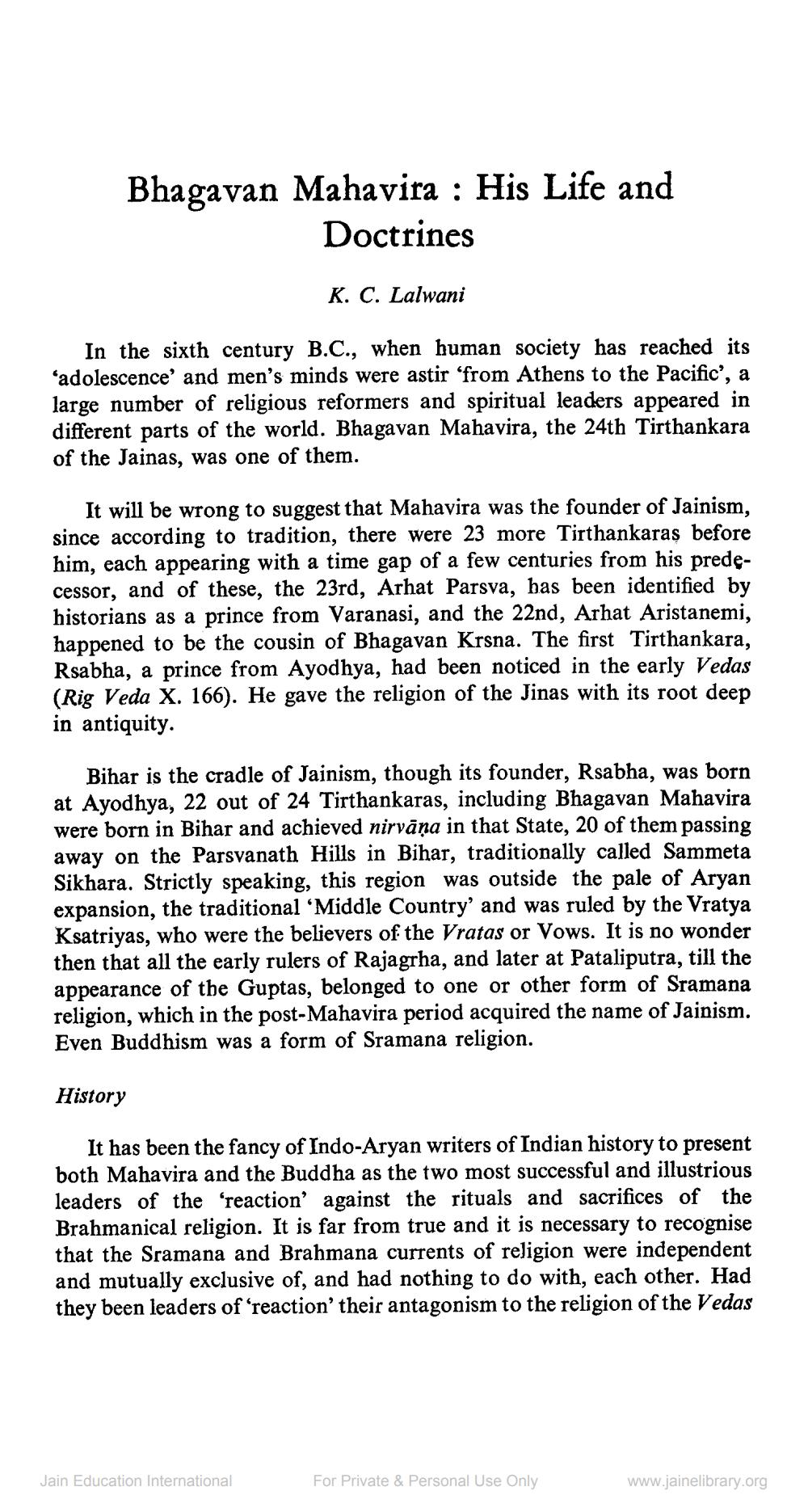Book Title: Jain Journal 1984 01 Author(s): Jain Bhawan Publication Publisher: Jain Bhawan Publication View full book textPage 3
________________ Bhagavan Mahavira : His Life and Doctrines K. C. Lalwani In the sixth century B.C., when human society has reached its 'adolescence' and men's minds were astir 'from Athens to the Pacific', a large number of religious reformers and spiritual leaders appeared in different parts of the world. Bhagavan Mahavira, the 24th Tirthankara of the Jainas, was one of them. It will be wrong to suggest that Mahavira was the founder of Jainism, since according to tradition, there were 23 more Tirthankaras before him, each appearing with a time gap of a few centuries from his predecessor, and of these, the 23rd, Arhat Parsva, has been identified by historians as a prince from Varanasi, and the 22nd, Arhat Aristanemi, happened to be the cousin of Bhagavan Krsna. The first Tirthankara, Rsabha, a prince from Ayodhya, had been noticed in the early Vedas (Rig Veda X. 166). He gave the religion of the Jinas with its root deep in antiquity. Bihar is the cradle of Jainism, though its founder, Rsabha, was born at Ayodhya, 22 out of 24 Tirthankaras, including Bhagavan Mahavira were born in Bihar and achieved nirvāṇa in that State, 20 of them passing away on the Parsvanath Hills in Bihar, traditionally called Sammeta Sikhara. Strictly speaking, this region was outside the pale of Aryan expansion, the traditional 'Middle Country and was ruled by the Vratya Ksatriyas, who were the believers of the Vratas or Vows. It is no wonder then that all the early rulers of Rajagrha, and later at Pataliputra, till the appearance of the Guptas, belonged to one or other form of Sramana religion, which in the post-Mahavira period acquired the name of Jainism. Even Buddhism was a form of Sramana religion. History It has been the fancy of Indo-Aryan writers of Indian history to present both Mahavira and the Buddha as the two most successful and illustrious leaders of the reaction against the rituals and sacrifices of the Brahmanical religion. It is far from true and it is necessary to recognise that the Sramana and Brahmana currents of religion were independent and mutually exclusive of, and had nothing to do with, each other. Had they been leaders of 'reaction' their antagonism to the religion of the Vedas Jain Education International For Private & Personal Use Only www.jainelibrary.orgPage Navigation
1 2 3 4 5 6 7 8 9 10 11 12 13 14 15 16 17 18 19 20 21 22 23 24 25 26 27 28 29 30 31 32 ... 49
